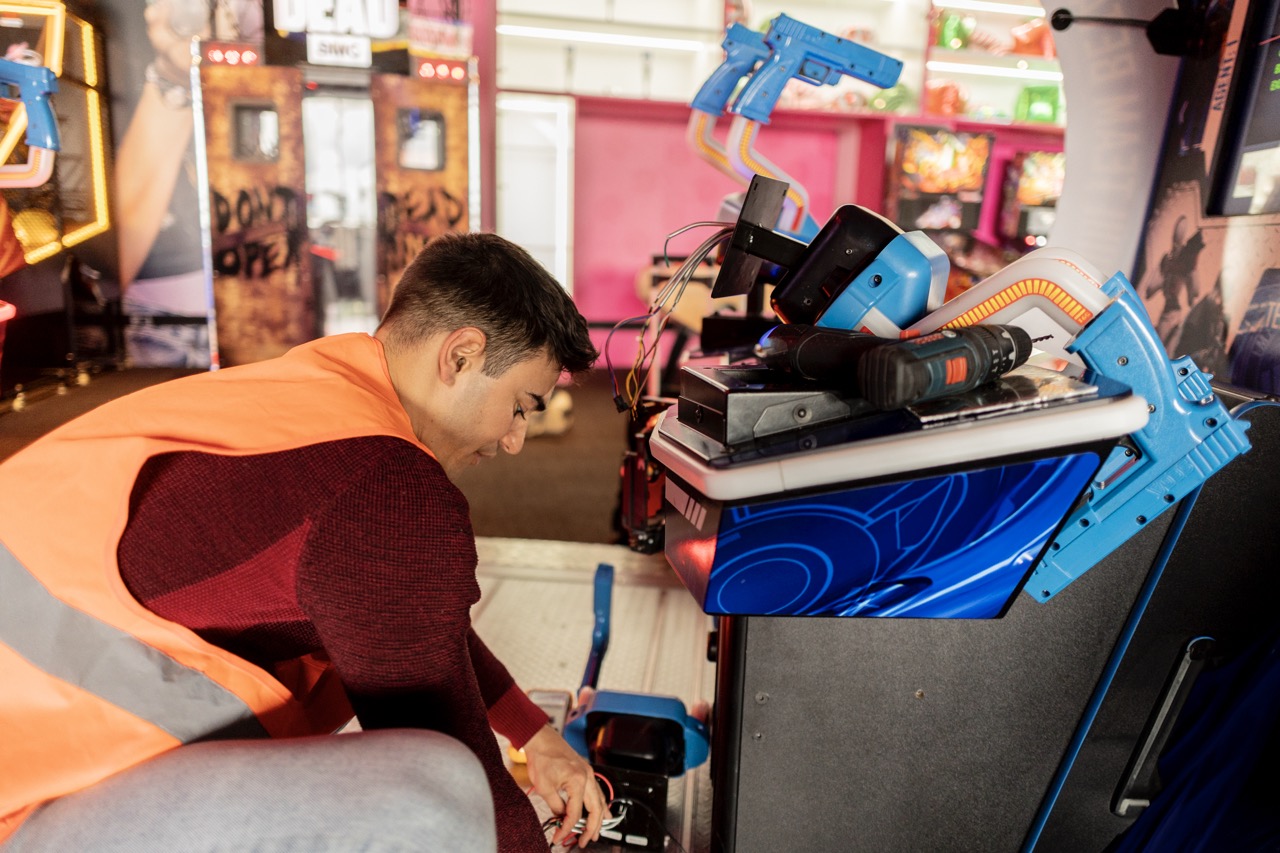If you’ve ever found yourself immersed in a dungeon full of monsters, treasures, and co-op gameplay, chances are you’ve experienced the legacy of Gauntlet. Released in 1985 by Atari Games, this arcade classic introduced players to a new genre that would set the stage for future dungeon crawlers. But what made Gauntlet such a game-changer? Let’s dive into its origins, gameplay mechanics, characters, and the lasting impact it has had on the RPG landscape.
The Origins of Gauntlet: A Game-Changer in Gaming History
Gauntlet emerged at a time when gaming was primarily focused on platformers and single-player experiences. The arcade scene was dominated by titles like Pac-Man and Donkey Kong, but Gauntlet dared to break the mold. Its introduction of cooperative multiplayer gaming allowed up to four players to join forces, creating a social experience that was almost unheard of in the mid-80s. Players could team up to tackle dungeons, making it a unique blend of competition and collaboration.
The game’s premise was simple: players choose from four iconic characters—Warrior, Wizard, Valkyrie, and Ghost. Each character had distinct abilities and attributes, allowing for different play styles. This diversity helped establish a format that many dungeon crawlers would later adopt. With its top-down perspective and pixelated graphics, Gauntlet may seem quaint by today’s standards, but it was revolutionary for its time, combining action with strategy in an engaging way.
As players navigated the procedurally generated dungeons, they encountered a variety of enemies, power-ups, and treasures. The game’s design encouraged exploration and teamwork, setting a precedent for future dungeon crawlers. In a way, Gauntlet was the spark that ignited the flame of cooperative gaming, influencing a broad spectrum of genres beyond just RPGs.
Gameplay Mechanics That Redefined Dungeon Crawlers Forever
One of the standout features of Gauntlet was its innovative gameplay mechanics that blended real-time action with RPG elements. The game utilized a health system that was unique for its time; players lost health continuously while exploring the dungeons, forcing them to strategize and work together to survive. This mechanic not only heightened the intensity but also encouraged players to find food items scattered throughout the levels to replenish their health.
Moreover, the game’s use of an expansive dungeon layout was groundbreaking. Unlike many of its predecessors, Gauntlet offered players a world filled with hidden rooms, secret passages, and an array of enemies. This complexity contributed to a feeling of exploration and adventure, which many future dungeon crawlers would emulate. The idea of integrated puzzles and traps within the dungeons also laid the groundwork for more intricate game design in later titles.
Another notable mechanic was the concept of resource management, particularly concerning potions and power-ups. Players had to make strategic decisions about when to use these items, adding layers of depth to the fast-paced action. The combination of real-time action with these RPG elements created a balanced experience that appealed to both casual gamers and hardcore enthusiasts, a formula that many modern RPGs still utilize today.
Iconic Characters: Meet the Heroes of Gauntlet
One of the hallmarks of Gauntlet was its memorable cast of characters, each with unique abilities that contributed to the team dynamic. The Warrior, for example, was the frontline tank with high health and melee prowess, ideal for absorbing damage and engaging enemies head-on. The Wizard wielded powerful spells, providing long-range support and crowd control, while the Valkyrie was a balanced character, excelling in both offense and defense. Lastly, the Ghost characterized the stealthy rogue archetype, able to navigate through enemies with agility.
These distinct character roles not only made each gameplay session feel fresh but also encouraged players to switch between characters and experiment with different team compositions. The game’s character diversity paved the way for future RPGs to emphasize character classes and roles, showcasing that every character could bring something unique to the table. This notion of character specialization fueled the development of numerous RPGs that followed.
The design of these characters and their abilities resonated with players, leading to their enduring legacy. Even today, fans of the genre recognize and celebrate the original Gauntlet characters, illustrating how deeply these figures are ingrained in gaming culture. Numerous remakes and sequels have sought to recapture that original magic while introducing new characters, proving that Gauntlet’s heroes have left an indelible mark on the gaming world.
Lasting Impact: How Gauntlet Influenced Modern RPGs
Gauntlet didn’t just create a new genre; it set a standard for future dungeon crawlers and RPGs that followed. Its emphasis on cooperative play laid the groundwork for multiplayer experiences in games like Diablo, Baldur’s Gate, and even modern titles such as Divinity: Original Sin 2. The idea of players working together to tackle challenges and explore vast dungeons became a fundamental aspect of RPG design.
Furthermore, the game’s approach to loot and resource management greatly influenced the way items and upgrades were integrated into RPGs. The idea of finding health potions, power-ups, and various treasures in dungeons became a staple mechanic in countless games thereafter. This system not only enhanced the gameplay experience but also introduced the addictive quality of loot collection that players have come to love in modern gaming.
Lastly, the character archetypes introduced in Gauntlet have echoed through the ages, inspiring generations of game developers. From party-based RPGs to action-adventure games, the foundation laid by Gauntlet can still be seen in character design and gameplay mechanics today. It’s safe to say that Gauntlet wasn’t just a game; it was a blueprint for future innovations in the RPG genre.
In a nutshell, Gauntlet was more than just an arcade hit; it was a revolutionary title that shaped the future of dungeon crawlers and cooperative gaming. From its innovative gameplay mechanics to its memorable characters, it set the stage for countless RPGs that would follow. The legacy of Gauntlet continues to inspire new generations of game designers and players alike, proving that sometimes, the classics truly never go out of style. So the next time you dive into a dungeon with friends, remember where it all began—thanks to Gauntlet!










